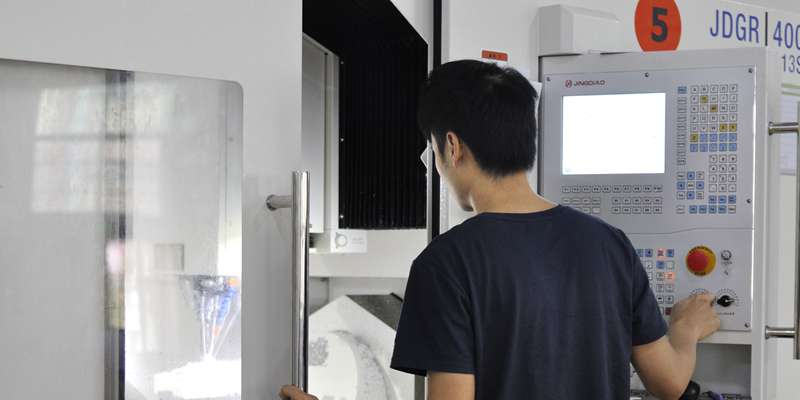- November 18, 2022
The vertical machining center has existed for many years and remains an integral part of modern CNC technology. The CNC vertical machining centers are effective for machining different industrial parts. These machines are versatile and efficient. They remove layers of material from a substrate to produce the desired part with various features.
This article discusses the vertical machining center, its working principles, components, application, and all you need to choose the right machine center for your project. Let’s dive in!
What is a Vertical Machining Center?
Vertical machining technology is one of the most productive tools in the CNC machine shop. It has various tools in the changer and other options that enhance and customize productivity. CNC vertical machining centers are flexible multi-functional tools that help machine holes and other properties in components with a flat surface. It operates in a vertical direction using a spindle that works at a steep angle.
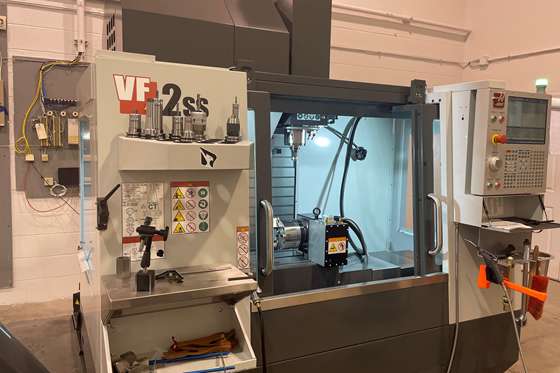
The vertical mills’ computerized controls allow automation, tool selection/rotation, repeatability, and contour control. These modern CNC machines have increased the productivity of the milling machines to the highest level, bringing about the CNC vertical milling centers. These machining centers vary depending on their axes, function, and other options available.
You can refer to the vertical machine center as an industrial workhorse because it can deliver parts with exceptional accuracy and shorter lead times. Its components have robust designs to deliver superior torque, horsepower, and machining speed. The level of automation of vertical milling centers also allows them to cut various materials and reduce overall manufacturing costs.
Working Principle of Vertical Machining Centers
The vertical machining centers operate on the design model of components. The numerous machine tools and the parameters needed for the parts are transformed into information codes that are generally acceptable and readable by the numerical control device of the machine.
The processing program helps to process the component’s CNC program automatically. These instruction codes are usually stored on information carriers like disks or punctured tapes while these carriers are sent to the input device. You can read this information and transfer it to the numerical control device. Also, you can use the computer and the machining center to send information directly to achieve the input and output of the component’s program.
The vertical machining center generally has three linear motion coordinates. There is also a horizontal axis rotary table attached to its worktable. This helps it to fabricate circular workpieces easily.
Components of A Vertical Machining Center
The vertical machining center comprises many important components. These components combine to fabricate parts according to ISO manufacturing standards. The components include the following:
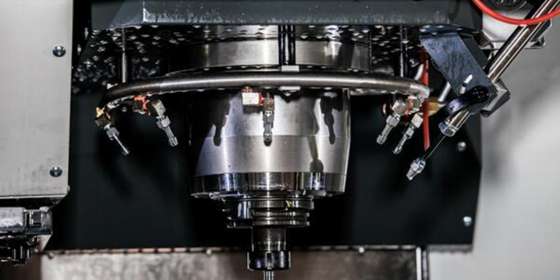
Rotating Spindle
The milling spindle is usually perpendicular/vertical to the working table. It is a rotating shaft with a unit for holding a tool or workpiece. Generally, the spindle shaft acts as a positioned, support, and rotary drive for workpieces.
Work Table
The table is flat on which to put the workpiece directly or using several fixtures such as hard clamping vises or milled aluminum parts. The table has an X-axis which includes the left and right motion, while the Y-axis has a motion to the front and back. These axes and the Z-axis allow you to add unlimited features to workpieces across the planes of motion.
Tool Changer
The tool changer increases the productivity of the vertical machine center by allowing the automatic selection of tools for different tasks ranging from rough cutting to fine-hole boring.
Rotating Tables
Adding extra axes to the vertical mills can significantly enhance productivity by changing a simple 3-axis milling machine into a 4-axis or 5-axis machine capable of producing complex components with different surfaces like turbine blades.
Coolant System
Most CNC vertical milling centers use recalculating coolant systems to ensure parts and cutter tools are well lubricated. This coolant system often utilizes water and soluble oil amongst various liquids.
Enclosures/Full Covers
These covers help to reduce the splatters caused by the milling operations. Likewise, it safeguards the machinists and the environment from the machining operation.
Quick Loading Loaders
Shuttle tables or other automated part-loading systems help to increase the productivity of the CNC vertical machining center while reducing downtime.
Screw/Chip Conveyor
Chip conveyors or augers can help move chips from the work area to facilitate productivity and eliminate downtime from manually shoveling waste chips.
Applications and Uses of Vertical Machining Centers
CNC vertical machining centers can machine several parts and products for different industries and uses. Sectors like aerospace, manufacturing industry, machinery builders, and medical utilize this CNC machining technology due to its high accuracy, high precision, and volume production applications.
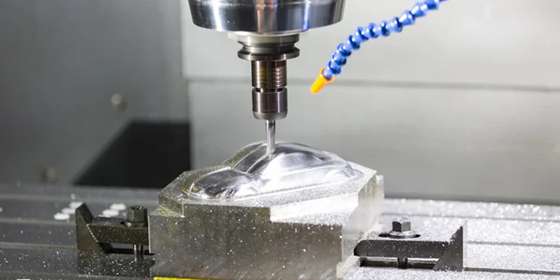
Here are some of the machined parts:
Parts With Unusual Shapes
Structures like a basket or a base have irregular shapes. Most of these machined parts require multi-point mixed processing of point, line, and face. Vertical milling centers with automatic machining capability allow you to machine these complex components that are often difficult to create using traditional techniques.
Box-Type Part
Box-type CNC parts are those with a one-hole system and several cavities within. These box-type parts are common in cars and airplanes. – Engine block, spindle box, gear pump shell, diesel engine block. Using a vertical machining center, you can execute 60 – 95% of the operation of standard machine tools in a one-time clamping.
Furthermore, the vertical centers have high accuracy, efficiency, rigidity, and automatic tool changer. Provided the process sequence is well programmed and you utilize proper fixtures and tools, the difficult problems of box-type parts machining can be resolved.
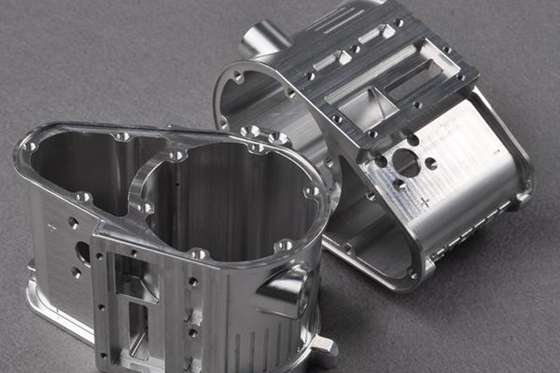
Complex Parts With Plenty of Curves
Components like propellers, cams, and impellers with complex curves are standard in aviation and transportation. Traditional machine tools make these components with curved parts, surface contour, and box/casting with closed inner cavities challenging to create with the desired machining accuracy.
However, multi-axis vertical machine centers integrated with CNC machine technology help to produce curved parts with the highest precision and accuracy efficiently and in a shorter period.
New Parts in Trial Production
Vertical machining center offers high flexibility and adaptability. When you change the machined object, you can build and input new programs, change some program segments, or utilize specific special instructions.
For instance, you can use the zoom feature to produce parts with the same shape but different sizes. It offers excellent convenience for small batch production, new product trial, or multi-variety production. Also, it reduces the production preparation and trial manufacturing cycle.
Differences Between Vertical and Horizontal Machining Centers
CNC machining centers are sophisticated machine tools with integrated automation, compound machining, versatility, and high speed. Horizontal and vertical machining centers are the standard CNC milling machines. This section discusses the differences between the structural capabilities and technical performance of these machine tools.
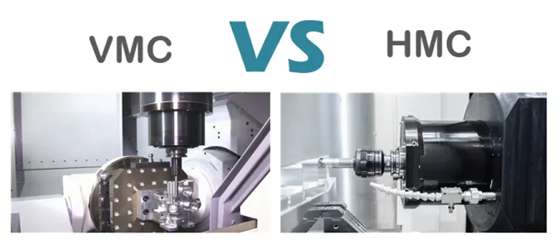
The Orientation of the Spindle
Both machines possess varying orientations that allow you to enjoy the depth that horizontal machining centers offer or the precision that vertical machining brings to the table. This is a primary difference between these two machines. The orientation or structure of the spindle determines how the cutter interacts/relate with the workpiece.
Tool Geometry
The geometry of a tool often influences the cutting specifications and results. The horizontal machining centers are shorter and thicker, which means they have the stability needed to sustain resistance while machining deeper cuts.
On the other hand, vertical machining is more precise and ideal for smaller workpieces. However, this has its disadvantages. It does not allow the machining of deeper cuts due to the vibration, resulting in deviations from designs.
Cutting Specifications and Accuracy
The horizontal centers perform better than vertical centers when considering their removal rates. They have very high stability and can produce deeper cuts. Generally, vertical machines are commonly used for limited operations like grooving and facing. But they can be very precise with the cuts and a finishing surface. So, this limited cutting ability results in a lower removal rate.
Number of Sides for Machining
vertical machining centers, especially 5-axis mills, are better suited for working on multiple sides of workpieces. They often come with integrated pallets with fixtures or tombstones attached. Spindle utilization in vertical machining centers is also greatly improved. As a result, accessing the front and sides of workpieces is easier. This improves productivity and reduces human error. However, these capabilities are limited to horizontal machining centers.
Cost of Each Machine
Horizontal machines are far more expensive to purchase and maintain. Also, they require professional machinists to handle their operations. As a result, this increases the overall manufacturing cost.
Vertical machines, on the other hand, cost less than horizontal machines. Likewise, the operations and maintenance of the vertical turning and milling centers are much simpler compared to horizontal machines. As a result, it makes them suitable for all small-scale productions.
How to Choose the Right Machining Center for Your Project?
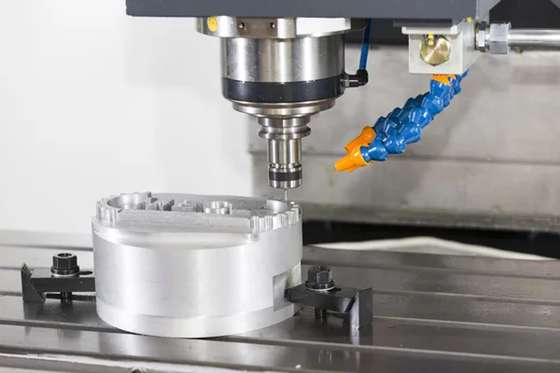
There is no doubt that the vertical machining center is a widely embraced machine tool used in several professional machine shops. Nevertheless, it is essential to consider the vast capabilities of vertical machining centers when choosing one for your project.
Several vertical machining centers can perform different machining operations, while others are suitable for specific specialized tasks. VMCs provide multiple adjustment capabilities and versatility and are pretty durable. More importantly, do a critical assessment of your project specifications and the capabilities of the vertical machine center to decipher if it is best for your project.
WayKen's One Stop Machining Center
Purchasing a vertical machining center can be an expensive cost, and you may choose to outsource your machining project to a professional CNC machine shop. At WayKen, we offer one-stop CNC machining services. Equipped with advanced vertical machining centers and 3,4,5 axis milling machines, we are fully capable of meeting all your machining projects.
From 1 to 10,000 parts production, we guarantee to deliver to you with competitive prices and high-quality standards. Want to get the best results from your project, contact us today, and let’s bring your ideas to life!
Conclusion
The vertical machining center is a versatile and rugged machine that handles complex machining operations. The advanced models of CNC vertical machining centers feature sophisticated technology, which allows it to machine parts with the tightest tolerances. Furthermore, it enhances uptime and is typically customizable to meet your part’s specifications. Vertical machine centers have high speed and deliver excellent quality.
FAQs
What are the limitations of CNC milling machines?
CNC milling machines generally have numerous limitations due to axis movement, size, tool capabilities, and degree of freedom. Also, the overall cost of maintaining CNC milling machines is another major limitation.
What is the feed rate in the vertical machining center?
Feed rate refers to the velocity at which the cutting tool works along the workpiece during its single rotation.
What are vertical machining centers used for?
Vertical machining centers are often used for high-precision, mass-production projects for several industries. They are more extensively used in the automotive and aerospace industries due to their efficiency and ability to fabricate intricate and high-precision components.

